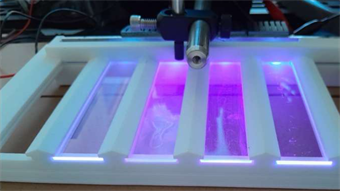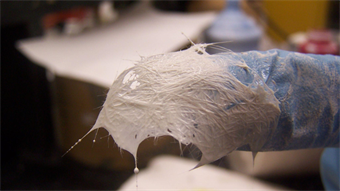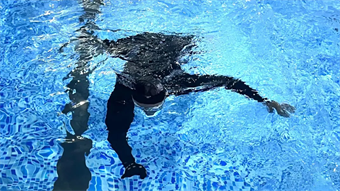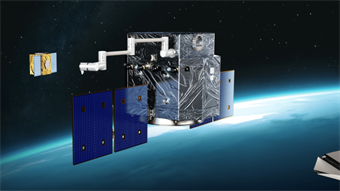Watch: Stair Climbing Made Easier, Astronauts to Sport Reebok Space Shoes, and a Transformable Drone.
July 26, 2017Climbing the Stairs Just Got Easier
Researchers at Georgia Tech and Emory University have created a device that intends to make walking up and down stairs easier for us. Their energy-recycling stairs store a user’s energy while walking down and then return the energy to the user while walking up. The stairs are spring-loaded and compress when someone comes down the stairs. When going up, the stairs give people a boost by releasing the stored energy, making it 37 percent easier on the knee than using conventional stairs. The low-power device can be placed on existing staircases and doesn’t have to be permanently installed. The researchers believe that their temporary stairs could also be helpful for those recovering from surgery or pregnant women — people who only need help for short periods of time and don’t need to permanently alter their homes.
Astronauts Get New Kicks
Miles above us, up in space, astronauts are sporting pairs of Reebok sneakers. Reebok has developed an innovative space boot that provides lightweight protection and support while optimizing comfort and performance. The boot has been exclusively designed to accompany the final space suit which will shuttle astronauts to and from the International Space Station in Boeing’s new vessel, the CST-100 Starliner. These boots mark the first evolution in space footwear in 50 years. Weight is a very important factor in space travel since even a single pound can have big financial implications. Traditional space boots were made of rigid leather with firm soles and were not integrated into the actual space suit but Reebok Floatride Foam introduces three new elements to the space boot: it decreases the overall weight, incorporates added comfort and support, and sports a sleek new look and style to space shoes.
Transformable Hovering Rotorcraft
Researchers from the Singapore University of Technology & Design have unveiled a new kind of flying robot named THOR, short for Transformable Hovering Rotorcraft. THOR achieves high structural efficiency by using all of its aerodynamic surfaces in both vertical and horizontal flight modes. The drone transforms from a flying wing into a spinning bicopter. THOR has similar characteristics to that of monocopters, which are equipped with one motor to generate lift by spinning. It also has two modes of flight: hovering and cruising. In hovering mode, THOR spins in place with its airfoils rotated 180 degrees from each other, like the rotors on a helicopter. In cruise mode, the airfoils are aligned in the same direction to form a flying wing. Future applications include pretty much anything that requires long range and swift hover, such as agriculture, surveillance, and package delivery.
Now remember to check out Engineering360 and Electronics360 for more news and information like this, plus engineering reference guides, product spec sheets and videos of interest!




